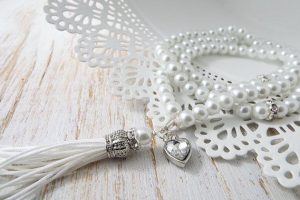Every aspect of the religion of Islam relating to women revolves around modesty and shame. It is in this regard that Islam commands women to remain within the confines of their homes, being totally concealed from the gazes of strange men, and not to leave their homes without a valid Shar’ee need.
The manner in which a woman is commanded to perform her Salaah — commencing from her attire for salaah to her postures during Salaah — all clearly point towards the aspect of concealment.
Hence, let alone the various other ibaadaat of Deen, the salaah of a woman alone illustrates the great degree of modesty and shame a woman is required to display. Hence, she is commanded to adopt the very same degree of modesty and shame which she displays in her salaah in other departments of her Deeni and worldly life.
Concealment
It is an undisputed fact that the physical composition of women is different to that of men. Shari’ah has taken this into consideration and thus ordained distinct rulings for men and women in many important aspects of Deen.
The underlying factor in the distinct rulings for women is that they have been commanded to do everything in a manner that is more concealing for them. This difference has also been considered in the various postures of salaah. A woman is commanded to carry out her postures in a way that is least revealing and most concealing.
Imaam Baihaqi (rahimahullah) has mentioned:
وجماع ما يفارق المرأة فيه الرجل من أحكام الصلاة راجع إلى الستر وهو أنها مأمورة بكل ما كان أستر لها (السنن الكبرى للبيهقي، الرقم: 3196)
All the various aspects in a woman’s salaah that differ from a man’s salaah (i.e. the manner of fulfilling the various postures of salaah) are all based on satr (concealment). A female is commanded to carry out every posture of her salaah in a manner that conceals her body shape and limbs the most.
Hazrat Abdullah bin Umar (radhiyallahu ‘anhuma) says that during the era of Hazrat Rasulullah (sallallahu ‘alaihi wasallam), when performing salaah, the women were instructed to draw their limbs together as close as possible.[1]
[1] عن نافع عن ابن عمر رضي الله عنهما أنه سئل كيف كن النساء يصلين على عهد رسول الله صلى الله عليه وسلم كن يتربعن ثم أمرن أن يحتفزن (مسند الإمام الأعظم للحصكفي على ترتيب السندي صـ 73)
(عن نافع عن ابن عمر أنه سئل كيف كن النساء يصلين على عهد رسول الله صلى الله عليه وسلم) أي في زمانه صلى الله عليه وسلم (قال كن يتربعن) أي في حال قعودهن (ثم أمرن أن يحتفزن) بالحاء المهملة والفاء والزاء أي يضممن أعضاءهن بأن يتوركن في جلوسهن (شرح مسند الإمام أبي حنيفة للقاري صـ 191)
صححه العلامة ظفر أحمد العثماني في إعلاء السنن (3/27)
 Ihyaaud Deen An Effort to Revive Deen in Totality
Ihyaaud Deen An Effort to Revive Deen in Totality




